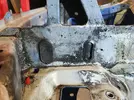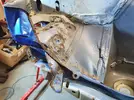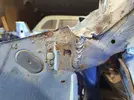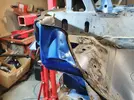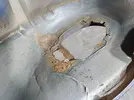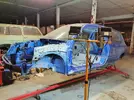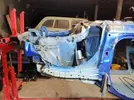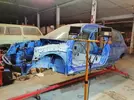conor
Active Member
This evening I realised that an old disused server cabinet ready for the bin would make some mighty supports for my car. Look at the profile and thickness of this stuff.
I reckon I can use it to possible replace the rotten box section in the car that I cut away and also use it to make some solid jacking points going forward. There is a little bit of flat stuff at the bottom which may be usable for the other repairs.
It seems quite thick for that though. I think it's about 2mm from looking and could be a b**** to bend... we shall see.


... Oh and the eagle eyed of you might have noticed this from before. The top of said cabinet makes for an awesome bench/standing stool/general seat. It's so strong.
One of my first times using an angle grinder too, I am so surprised all the "legs" are equal lengths and it doesn't wobble at all.

I reckon I can use it to possible replace the rotten box section in the car that I cut away and also use it to make some solid jacking points going forward. There is a little bit of flat stuff at the bottom which may be usable for the other repairs.
It seems quite thick for that though. I think it's about 2mm from looking and could be a b**** to bend... we shall see.
... Oh and the eagle eyed of you might have noticed this from before. The top of said cabinet makes for an awesome bench/standing stool/general seat. It's so strong.
One of my first times using an angle grinder too, I am so surprised all the "legs" are equal lengths and it doesn't wobble at all.

